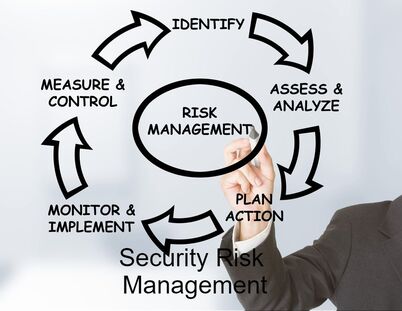Security Risk Is Now Business Risk Which Has To Be Mitigated

Security Risk Management is the ongoing process of identifying security risks and implementing plans to mitigate risk. Risk is determined by considering the likelihood that known threats will exploit vulnerabilities and the impact they have on assets. Understanding how to integrate the risk assessment into your core business processes in a way that it provides relevant risk information to the management of a company or organization.
- Identify and Prioritize Asset- Identifying, understanding and prioritizing the assets of a company's organization that need to be protected. (intellectual property, business processes, assets, and people)
- Identify and Prioritize Risk- Identifying, understanding, and prioritizing the security threats to businesses and its assets that they face (both existing and emerging) and, critically, the risk associated with those threats.
- Mitigate Prioritized Risk- Taking the necessary, appropriate, and realistic steps to protect against the most serious security threats and risk.
- Manage Risk- Sikur Services will sit down with clients and give them the independent facts and help with deciding on the action to take to manage the risk.
Enterprise Security Risk Management
ESRM recognizes that security responsibilities are shared by both security and business leadership, but all security decision making is the responsibility of the business leaders. The role of the security leader in ESRM is to manage security vulnerabilities to enterprise assets in risk decision making partnership with the organization leaders in charge of those assets.
Managing the security decision making process requires:
ESRM recognizes that security responsibilities are shared by both security and business leadership, but all security decision making is the responsibility of the business leaders. The role of the security leader in ESRM is to manage security vulnerabilities to enterprise assets in risk decision making partnership with the organization leaders in charge of those assets.
Managing the security decision making process requires:
- Educating internal business partners on the realistic impacts of security risk to assets under their control.
- Presenting potential security strategies to decision-making business leaders to mitigate those impacts.
- Enacting the business leader's security risk mitigation choice, driven by business risk tolerance.
